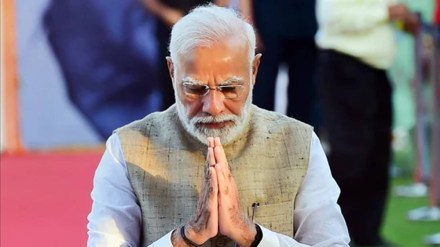By Monish Tourangbam
Narendra Modi has taken oath for a third term as India’s Prime Minister at a grand swearing in ceremony amidst a huge list of guests including leaders from the neighbouring countries. The election result did bring about a dent on Bharatiya Janata Party’s (BJP) influence. The power dynamics of coalition politics will lead to granular changes in how consensus is struck with coalition partners and decisions are taken. However, the longer game of India’s engagement with the world and its place in the international system will largely stay the course. The path ahead for Prime Minister Modi as India’s leader will be filled with opportunities and risks to reassure, recalibrate and rise in a world that stands at an inflection point of immense geopolitical, geoeconomic and technological transition.
Primarily, taking forward the vitality of India’s economic rise from the fifth largest to the third largest economy in the world will remain the core aim of India’s foreign policy. The global economic order is in the midst of a major transition, coming out of a severe pandemic jolt, and entering a new era of globalisation. This new economic revolution calls for structural reforms and India will be a major shaper of the shape of things to come, through bilateral as well as multilateral engagements like the G20 and the expanded BRICS. Moving past an old globalisation of offshoring and outsourcing manufacturing and services sector, the current buzzword among major economies is building resilient, diversified and transparent global value chains on all tradable commodities from semiconductors to pharmaceuticals.
The rapid transition in technologies and the global imperative to move towards a climate friendly greener economy are at the heart of this new era of globalisation. India’s terms of engagement with major economies of the world will have to build on these two pillars, and the India-US Initiative on Critical and Emerging Technology (iCET) is the type of whole-of-nation and multi-agency partnership that will shape economic relationships of the 21st century.
Navigating geopolitical convulsions to create a conducive environment for global economic growth will remain the major task for India and its like-minded partners. From the uncertain trajectory of the Ukraine war to the raging humanitarian crisis in West Asia to flashpoints in East Asia, the world is truly in a moment of flux. While many of these crises will call for New Delhi’s attention and diplomatic energy, China’s aggressive posture at its border and in the Indian Ocean, will continue to pose clear and present dangers. Quite clearly, therefore, creating deterrence is a key objective for India and its partners.
The quest for becoming Atmanirbhar (self-reliant) as a defence power, and transforming into a net defence exporter from an importer will continue to drive the nature of India’s defence cooperation with major partners. Although there is enough vision to move from a buyer of defence equipment towards co-development and co-production, the effective implementation of the same will need much more specific milestones and sustained efforts on the means to do so. In this aspect as well, the rise of new technologies and their multi-domain applications is already pushing for cooperation to synergize defence industrial conclaves among partner countries that involves streamlining the contribution of both public sector units and private players. The design, production and deployment of defence technologies in highly informatized battlefields across the world are seeing a generational shift. New Delhi would have to stay ahead of the curve, to be militarily prepared and ready.
As India champions the cause and concerns of the Global South, there is no doubt that China’s Belt and Road Initiative (BRI) and its infamy remains the driving narrative when it comes to infrastructure investment and building, in India’s immediate and extended neighbourhood. From seaports to highways, BRI despite its evident pitfalls of debt traps and ambiguous commercial purpose remains ubiquitous. Therefore, for India and like-minded partners such as the Quadrilateral Security Dialogue (Quad), providing feasible alternatives to BRI projects will remain an impending task. Middle and low-income countries in the Global South will continue to experience development gaps of different levels and of different natures, and India as an aspirational power will be expected to step up its game and deliver in this challenge of delivering climate friendly development that is transparent, sustainable and of quality.
As Prime Minister Modi takes up the responsibilities of leading India’s growth story in a turbulent world, the time is ripe to revisit its strategic roadmaps with major partnering countries and regional institutions, to reassess the problems of the next decade, and devise long-term solutions that will help navigate short-term irritants. Therefore, how India will protect and promote its wide variety of interests, through multi-alignment and by balancing bigger and smaller powers will remain an operational challenge for India’s core foreign policy planners. How India would reassure old partners, while recalibrating ties with new partners, and navigate its rise in a competitive international system will become more acute in times of growing great power rivalry, widening East-West schisms and misalignment in the priorities of the Global North and South.
The author is Director at the Kalinga Institute of Indo-Pacific Studies. He is a regular commentator on International Affairs and India’s Foreign Policy.
Disclaimer: Views expressed are personal and do not reflect the official position or policy of Financial Express Online. Reproducing this content without permission is prohibited.
